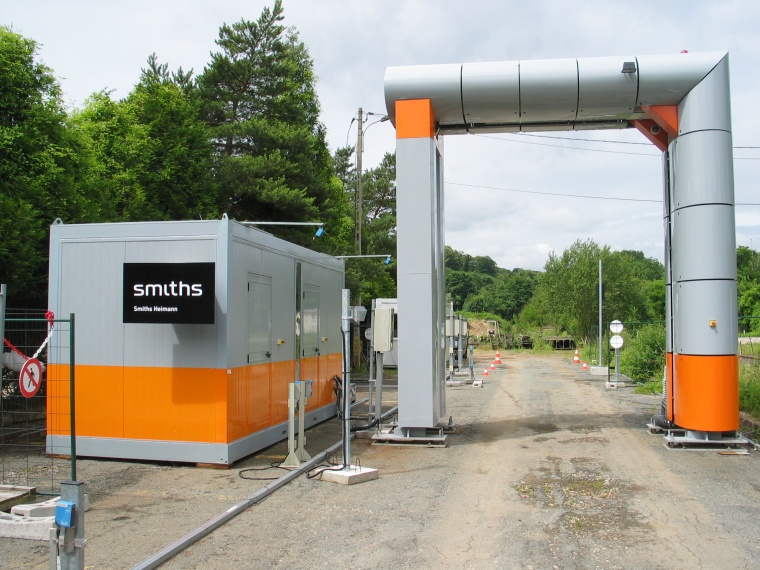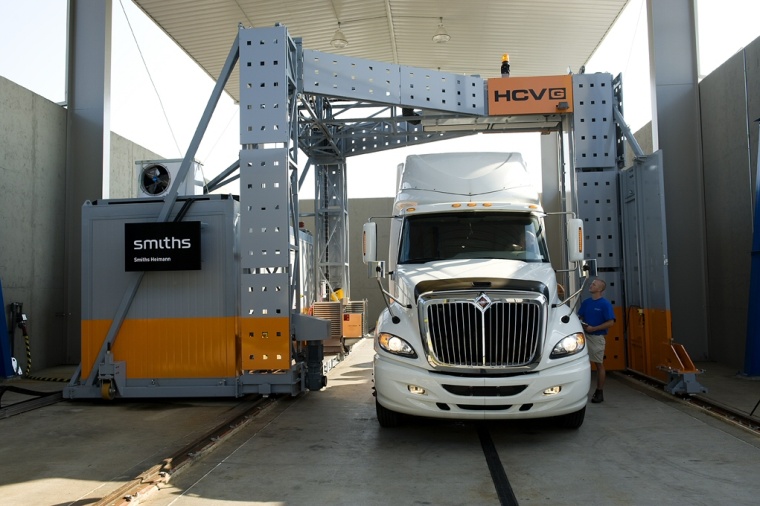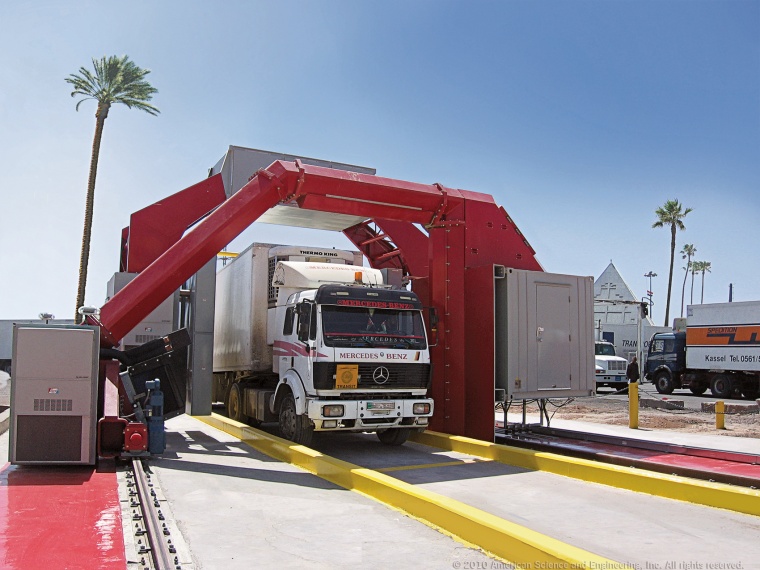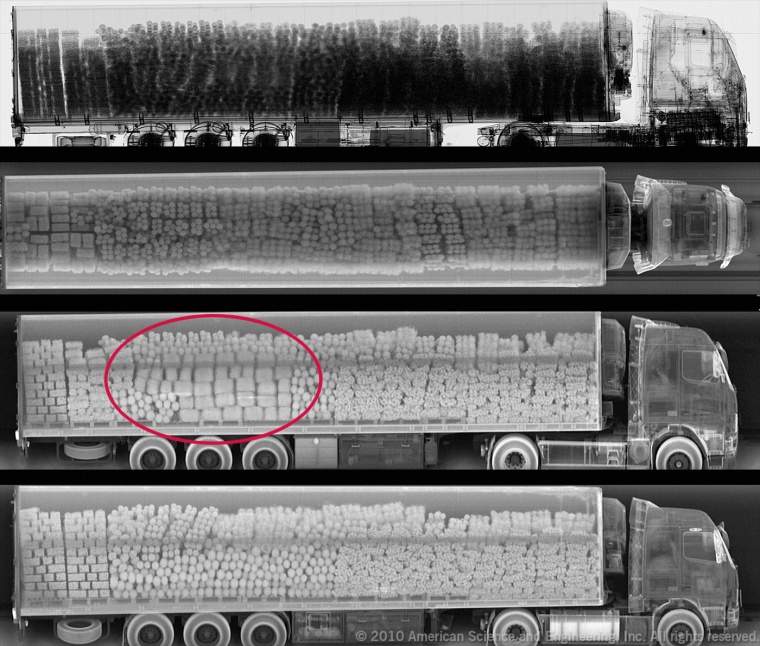No Place to Hide
Our article ‘Please Remain Seated'reported on Secura's system for scanning passenger vehicles and lightweight goods vans for contraband and/or dangerous goods. One key aspect was k...




Our article ‘Please Remain Seated' reported on Secura's system for scanning passenger vehicles and lightweight goods vans for contraband and/or dangerous goods. One key aspect was keeping the traffic moving and avoiding delays. Here we look at the larger dimension of scanning complete trucks with their trailers and containers, and the throughput factor is just as significant in the design of larger systems.
Smugglers are without doubt very creative people. They continue to surprise customs officers around the world with new methods of concealing their wares, be it cigarettes, drugs, weapons or, more seriously, explosives that they are trying to transport. They build false floors and walls into vehicles, create concealed compartments, use multi-layer packaging around normal goods as well as shielding materials in an attempt to make their illegal load invisible.
X-ray scanners have already been in use for many years around the world to illuminate deep within luggage and freight loads and are highly successful in discovering contraband. Their sophistication has increased dramatically over the years and now provides security and government personnel with detailed images, differentiated according to the type of material that is found. The sheer dimensions of a truck and the size of its load mean that manual inspection is not an option in all but the most unusual cases. So static portal systems, travelling gantry systems or ‘pack-up-and-go' mobile systems are used to sound the alarm if something unusual is discovered.
Scanning gantries such as the HCVG from Smiths Detection that move along the vehicle or stationary portals like the Sentry from AS&E through which the trucks drive, are constructed to cope with the maximum permissible vehicle height - the same as road bridges in the respective country - and can usually be operated by just one or two personnel. It is important to detect dangerous substances or contraband quickly without disrupting the flow of vehicles. The x-ray scanner in stationary portal systems is safe for the drivers as they drive through at just a few mph/kmph, and only turns on once the tractor unit cab has passed the emitter. This ensures that they are not exposed to the strong beam of x-rays that is easily capable of penetrating through the truck's metallic structure.
The Secrets Inside
Modern truck scanners are capable of detecting all sorts of interesting items that are not intended to be found. Narcotics are relatively easy to find as are any illegal immigrants stowed away in secret compartments (although they will be subjected to significant x-ray radiation). All sorts of weapons, whether they are made of plastic materials or metal, together with the ammunition or other explosive material that makes them a threat show up distinctly in the operator's display. Radioactive materials emitting neutrons or gamma rays that could be found in nuclear devices or ‘dirty' bombs are highlighted.
As organic materials show up differently on the operator's screen, foodstuffs, natural narcotics and, of course, humans and animals will be immediately visible. Stowaways can inadvertently contribute to pandemics, the introduction of non-native species as well as crime and they must be discovered at border crossings. The illegal import of tobacco products, endangered plants, live species or prohibited animal parts continues to rise worldwide and being able to detect these before they enter a country acts as a deterrent to those who are responsible for shipping them.
The Technology
Apart from x-rays, other identification techniques are also used, depending upon the system manufacturer and the user's specific detection requirements. Gamma-ray radiography is often employed, for example in the Gaeds system from Rapiscan, and this penetrates through aluminum, concrete, soil and to only a slightly less extent even through lead. Gamma radiation detectors are frequently used passively in systems that scan cargo containers, although the sensors are less able to detect nuclear sources if these are shielded. Some quite innocent loads can sometimes show up as potentially hazardous. For example, bananas contain a high amount of potassium which naturally emits the radioactive isotope potassium 40. Even cat litter made out of ground rock contains naturally occurring radium and can appear suspect. For this reason, many systems now employ dual technology to filter out the ‘natural' hazards while still being able to detect the real ones. If high neutron emissions are detected, there is a high probability that weapons-grade material is on board.
Design Considerations
The continued growth in world trade puts ground space at ports and border crossings at a premium. It would be a luxury nowadays to afford a complete, separate customs building in which to house a scanning system, therefore any newly introduced system must have as small a footprint as possible. If it is going to be placed directly in the traffic flow, entry and exit must be seamless with the time taken to completely scan a truck and any attached trailers kept to an absolute minimum. Depending upon the expected traffic, systems are available that process between 40 and almost 200 trucks per hour.
Apart from a reliable power supply and a solid foundation, no other infrastructure is normally required for the installation of gantry truck scanners. A cost consideration will be the number of staff required to operate the system. One person will always be required to view the monitor and carry out any analysis of the scan. A second person could be required simply to ensure compliance with vehicle speed and perform general traffic control, in particular where drivers from many different countries with limited language knowledge are passing through.
Business Partner
Rapiscan Systems Ltd.X-Ray House, Bonehurst
RH1 5GG Salfords
UK
most read

Integrated and Futureproof: Traka’s Next Chapter
Interview with Stefni Oliver on Traka’s Vision for the Future

GIT SECURITY AWARD 2026 - The winners have been announced!
GIT SECURITY AWARD 2026: The best safety and security solutions of the year - now an overview of all winners

Assa Abloy's battery-powered Aperio KL100 secures lockers
Boost workplace security and operational flexibility by securing more than just doors.

When the Internet stumbles: Why DNS is important
When DNS fails, the internet stumbles-AWS outage proves resilience and redundancy are vital for digital trust







